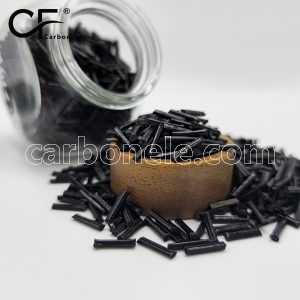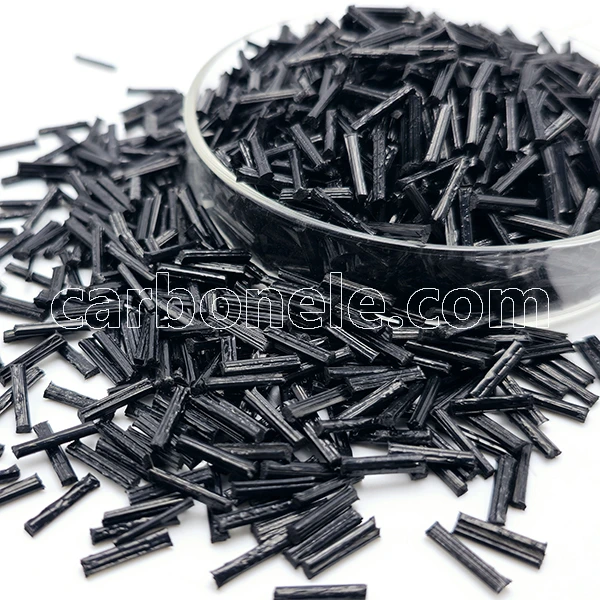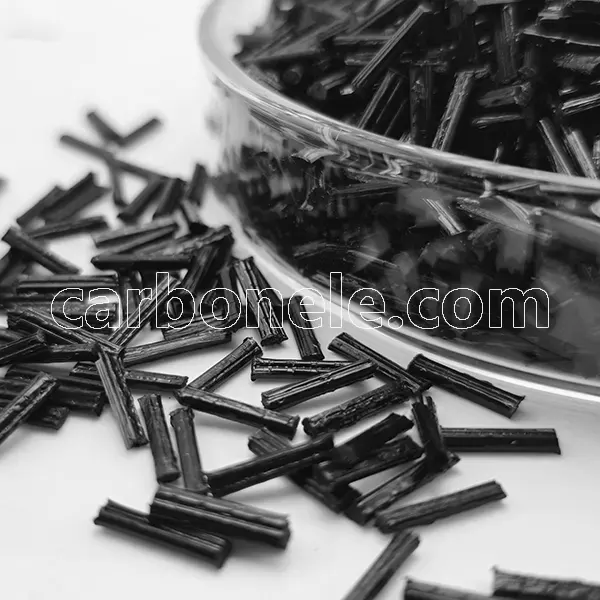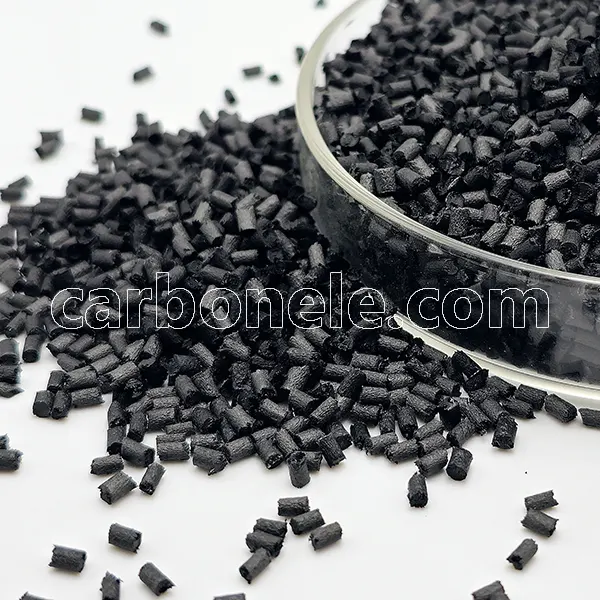What're The Differences Between PA66 CF30 And PA66 LCF30? - Carbon Fiber Compounds Manufacturer | Supplier
This article compares PA66 CF30 (30% short carbon fiber reinforced nylon) and PA66 LCF30 (30% long carbon fiber reinforced nylon), highlighting their differences in fiber length, mechanical properties, processing methods, and industrial applications. PA66 CF30 excels in balanced strength and moldability, ideal for automotive and industrial parts, while PA66 LCF30 offers superior toughness and load-bearing capacity, making it suitable for aerospace and high-stress components. The analysis helps engineers and material specialists select the optimal composite based on performance and manufacturing requirements.
PA66 CF30 (30% Short Carbon Fiber Reinforced Nylon 66)
PA66 CF30 is a nylon 66 composite reinforced with short carbon fibers (<1mm) at 30% loading. It offers high strength, rigidity, and dimensional stability while retaining nylon 66’s chemical resistance and wear properties. The short fibers ensure uniform dispersion, making it ideal for injection molding complex parts. Typical applications include automotive gears, bearings, industrial housings, and electronic components where lightweight, fatigue resistance, and processability are critical.
PA66 LCF30 (30% Long Carbon Fiber Reinforced Nylon 66)
PA66 LCF30 incorporates long carbon fibers (5–12mm) at 30% loading, delivering superior mechanical properties—higher tensile strength, impact toughness, and creep resistance compared to short-fiber variants. The continuous fiber network enhances load transfer, making it suitable for high-stress environments, though processing requires optimized injection molding. Key uses include aerospace structural parts, high-performance automotive components (e.g., suspension systems), and robotic load-bearing frames where extreme strength and durability are prioritized.
PA66 CF30 and PA66 LCF30 are both nylon 66 (polyamide 66) reinforced with carbon fiber, but they differ in the length of the carbon fibers, which affects their mechanical properties and applications.This article compares PA66 CF30 (30% short carbon fiber reinforced nylon) and PA66 LCF30 (30% long carbon fiber reinforced nylon), highlighting their differences in fiber length, mechanical properties, processing methods, and industrial applications. PA66 CF30 excels in balanced strength and moldability, ideal for automotive and industrial parts, while PA66 LCF30 offers superior toughness and load-bearing capacity, making it suitable for aerospace and high-stress components. The analysis helps engineers and material specialists select the optimal composite based on performance and manufacturing requirements.
Key Differences Between PA66 CF30 and PA66 LCF30
| Property | PA66 CF30 (30% Carbon Fiber) | PA66 LCF30 (30% Long Carbon Fiber) |
|---|---|---|
| Fiber Length | Short fibers (typically < 1 mm) | Long fibers (typically 5–12 mm) |
| Strength | High, but lower than LCF | Higher tensile & impact strength |
| Stiffness | High stiffness | Even higher stiffness (better load-bearing) |
| Impact Resistance | Moderate (brittler than LCF) | Superior (fibers absorb more energy) |
| Surface Finish | Smoother | Slightly rougher due to longer fibers |
| Mold Flow | Easier to process (shorter fibers) | More challenging (long fibers can clog) |
| Applications | Structural parts, gears, housings | High-stress parts (auto/aerospace) |
Detailed Comparison
1. Fiber Length & Reinforcement
-
PA66 CF30: Contains short carbon fibers (typically < 1 mm), uniformly dispersed for balanced strength.
-
PA66 LCF30: Uses long carbon fibers (5–12 mm), providing enhanced load transfer and higher mechanical performance.
2. Mechanical Properties
-
Tensile Strength: LCF30 > CF30 (long fibers carry stress more efficiently).
-
Impact Strength: LCF30 absorbs more energy before breaking (better for dynamic loads).
-
Stiffness: Both are stiff, but LCF30 offers higher rigidity due to fiber alignment.
3. Processing & Manufacturing
-
CF30: Easier to mold (short fibers flow better in injection molding).
-
LCF30: Requires specialized molding to preserve fiber length (higher risk of clogging).
4. Common Applications
-
PA66 CF30:
-
Automotive (gears, bushings, housings)
-
Industrial parts (bearings, insulators)
-
Consumer goods (tool handles, sporting goods)
-
-
PA66 LCF30:
-
Aerospace (structural brackets, drone arms)
-
High-performance automotive (engine components, suspension parts)
-
Robotics (high-strength, lightweight frames)
-
Which One to Choose?
-
For high stiffness & ease of processing → PA66 CF30
-
For maximum strength, toughness & fatigue resistance → PA66 LCF30
Previous News
What Are the Benefits of Carbon Fiber Modified ...Next News
Different Between PA66-CF10 and PA66-CF30
Feature Product
-
PA12 LCF30 for Drone Fuselages & Wings
What do you know about PA12 LCF30? PA12 ...
-
Competitive Price PA6 LCF30 Composites
What’s it? PA6 LCF30, which stands...
-
ABS CF10 Compound ABS 10%CF Thermoplastic Compo...
What’s ABS CF10? ABS CF10 refers t...









